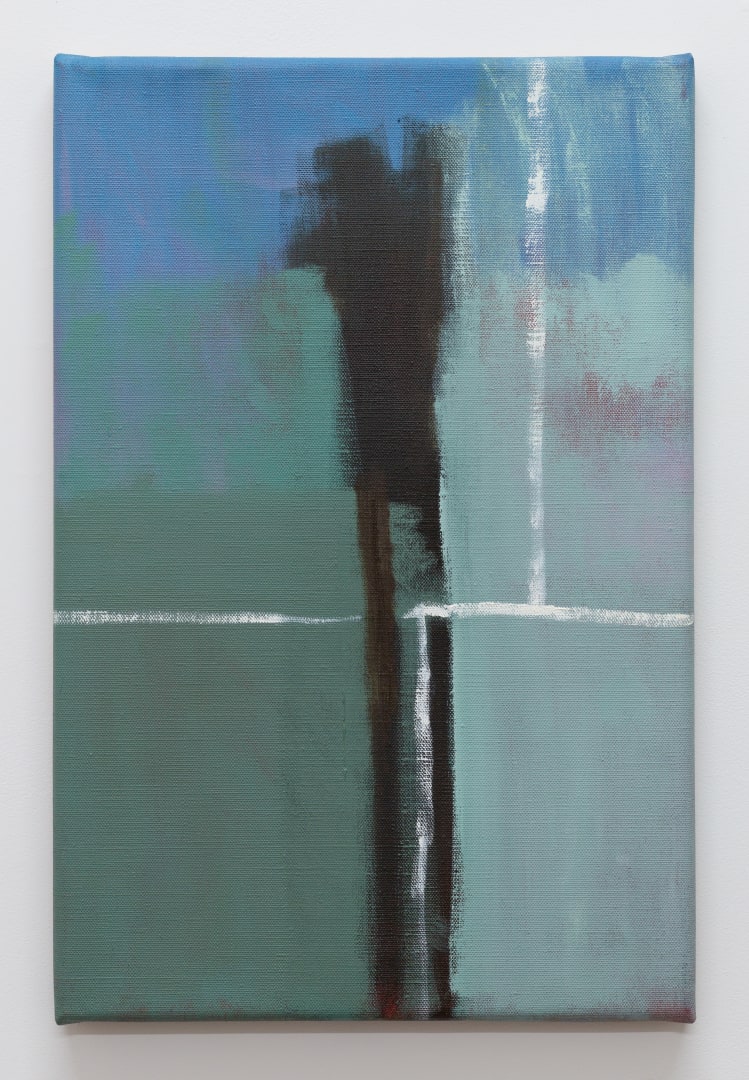Sumer is pleased to present Sea Garden, an exhibition of new paintings by Tāmaki-based painter Sandra Bushby. The exhibition features paintings that formed part of her doctoral submission, which was presented earlier this year at Elam School of Fine Arts, the University of Auckland; together with newer works that she has completed since. This is the artist’s second solo exhibition at the gallery.
Taking its title from a collection of poems first published in 1916, by the late American poet, novelist and feminist H.D. (Hilda Doolittle), Sea Garden presents a series of paintings that are inspired by these earlier written works. A key proponent of the Imagist group, H.D. (and cohorts) stood against the perceived decadence and romantic optimism of Victorian poetry; their work prioritizing simplicity and clarity of expression, focusing upon their exacting descriptions of physical things and phenomena. In the case of Sea Garden this entailed the describing of one’s experience of being within a landscape, specifically one that was proximity to the sea, subject to the elements (be they stormy or calm)—and for which functioned also as a metaphor for finding her poetic voice. Bushby’s paintings imbibe H.D.’s texts, yet they are not necessarily illustrative of them; instead, her paintings share an aesthetic approach to the poems. Similar both in terms of syntax and expression, they define a subjective experience of looking, of experiencing or being present within a place. And within this they maintain the sense of ambiguity and openness inherent to the poetic form, one which allows the viewer to unselfconsciously place themselves within the space, without seeming as if they were somehow removed, a bystander or voyeur.
In many senses we can consider these works to be inversion of the tradition of en plein air. Rather than being directly observed from nature, they are instead painted without any specific visual reference, inside the artist’s studio. The paintings are derived from the abstract: from a simple colour, a feeling, a recollection, an inference of a thing. The painted forms she derives from there are done so by means of what the artist describes as emergence—by intuition. And the images which are arrived upon are neither abstract, nor are they figurative, in any strict sense. They are however ethereal, phantasmagoric, allusory.
Bushby’s paintings explore the concept of painterly and poetic intervals. She employs both the formal language of painting—colours, spaces, lines—and the signs and structures of written (and spoken) poems—punctuation, line breaks, breaths. Reading poetry and referencing poems’ visual structures and forms is at the core of her practice. In this way, her paintings also become a space for reflection. Her recently completed doctoral thesis, titled: ‘Resisting Foreclosure: Infinite Structures and No Endings in an Emergent Painting Practice’, suggests painting as a tool for turning things over, for “opening up unexpected pockets of feeling.” She primarily works in oil on linen, predominantly with a restrained, earthy colour palette of greys, reds, blues, and greens. Allan Smith says of her recent work, “[Bushby] works as if painting is a special way of marking time; of letting time take incremental and intermittent form; of letting time show itself through its crumbled edges and atmospheric patching; of showing the inadvertency of painting’s time.” The blocks of colour, repeated lines, small energetic marks are arranged on the canvas in such a way that visually suggest lines or stanzas of poetry. Though they also suggest the energy of poetry too: each painting has its own rhythm, density, and clear, light spaces for taking a breath.
Sandra Bushby (b. 1965, Hawkes Bay, New Zealand) currently lives and works in Auckland where she is a Part time Painting tutor at Elam School of Fine Arts. She has recently exhibited work at Window, Auckland, Two Rooms Gallery, Auckland, and George Fraser Gallery, Auckland. Her work is held at the Te Papa Tongawera Museum of New Zealand and Auckland Museum collections.


